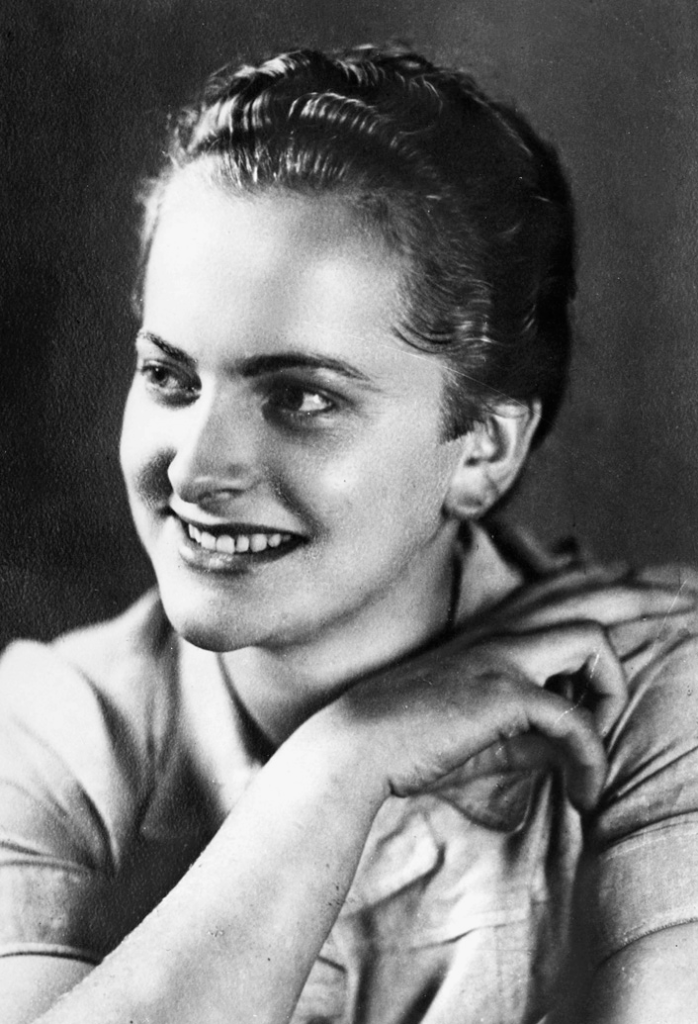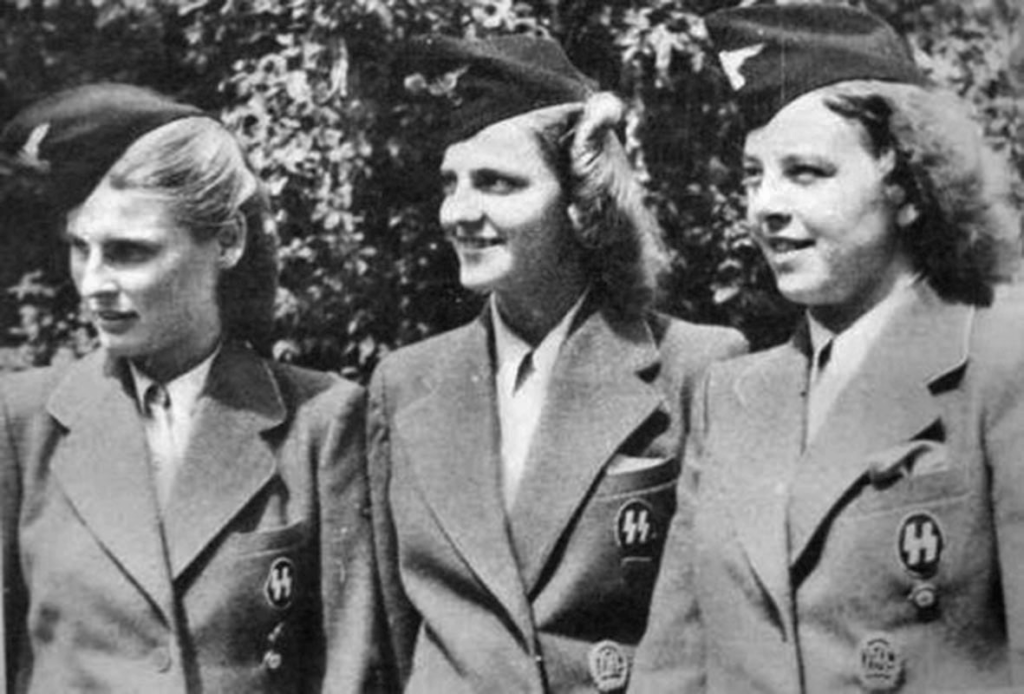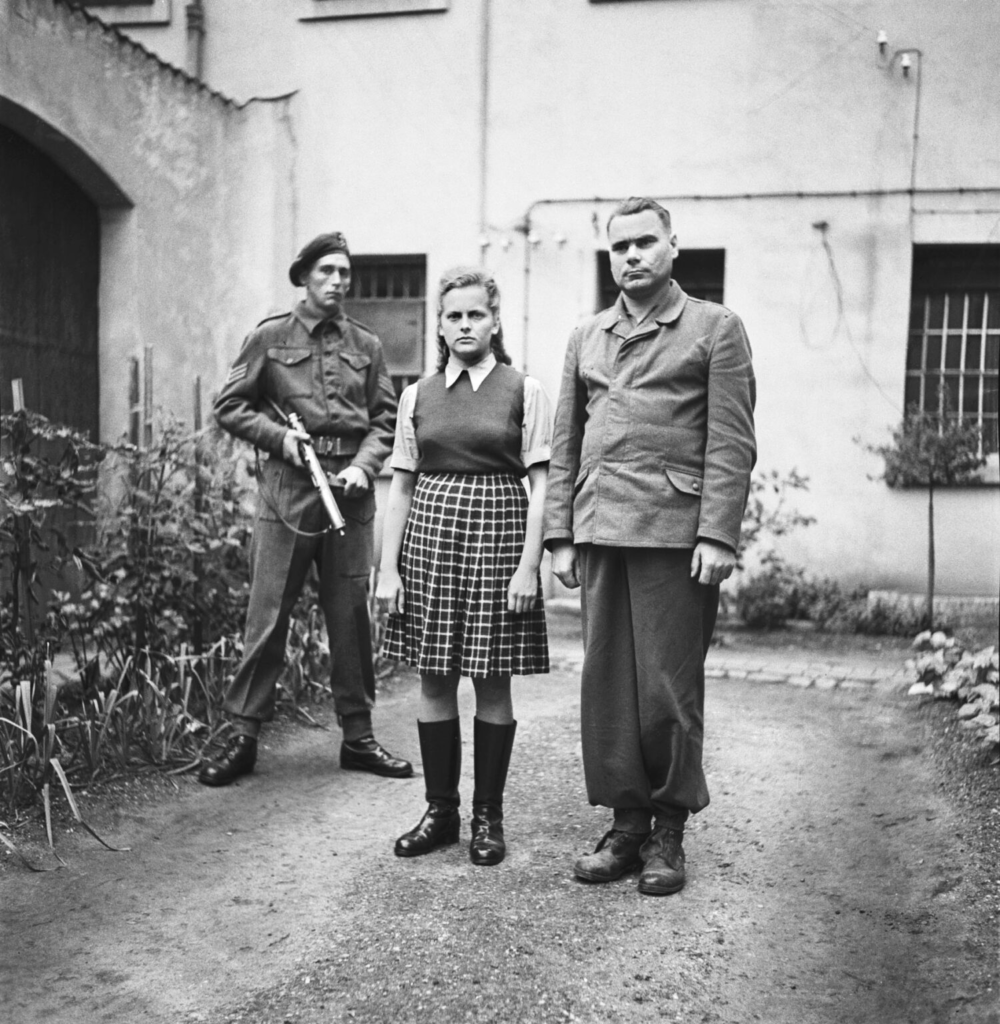There was a Nazi guard who would sleep with prisoners and then send them to gas chambers.

Irma Grese was a sadistic Nazi guard at the concentration camp Auschwitz. Irma Grese was nicknamed the “Hyena of Auschwitz” by prisoners because of how she treated them. She is also remembered for her physical beauty. Survivors dubbed her “the Beautiful Beast,” “the Blond Angel,” and “the Blond Angel of Hell.”
Irma Grese was described as attractive with large blue eyes and blonde hair. She was the poster child for the Aryan race.
“She was one of the most beautiful women I have ever seen. Her body was perfect in every line, her face clear and angelic, and her blue eyes the gayest, the most innocent eyes one can imagine. And yet Irma Grese was the most depraved, cruel, imaginative pervert I ever came across.”
—Dr. Gisella Perl
That is how Gisella Perl, a female inmate doctor in Auschwitz-Birkenau, remembered Irma Grese
Irma Grese committed innumerable acts of sadism and roamed the women’s camps at Ravensbrück, Auschwitz, and Bergen-Belsen looking for female victims to abuse. Irma Grese was known for whipping children on their breasts and forcing Jewish girls to watch as she raped inmates.

Irma Grese would beat at least 30 women to death every day and enjoyed selecting young attractive girls for sexual abuse before sending them to the gas chambers. She was known for being a nymphomaniac and would sexually abuse male and female prisoners and even organize orgies with other Nazi guards and with their wives.
She participated in medical experiments on prisoners and watched with pleasure as a woman gave birth while tied up. Irma Grese had a lampshade made from the skin of dead prisoners.
After the war, she was arrested and put on trial for the crimes. She was unapologetic and at an age of 22 she was sentenced to death by hanging and became the youngest young Nazi criminal to be executed
Early Life and Family
Irma Elisabeth Ilse Ida Grese was born to Berta Grese and Alfred Grese, both dairy workers, on 7 October 1923. Irma was the third child of five children (three girls and two boys). In 1936, her mother died by suicide after drinking hydrochloric acid following the discovery of Alfred’s affair with a local pub owner’s daughter.
Irma’s sister Helene said at Irma’s trial that in primary school, when “girls were quarreling and fighting, ‘Irma never had the courage to fight, but ran away’. In 1938, at the age of 15, Grese left school. She worked on a farm for six months, then in a shop, then at a hospital run by the SS for two years.
ALSO READ: The Making of Adolf Hitler Part 1 (This will surprise! you)
Concentration Camp Guard
In 1939, Irma Grese decided to study nursing at Hohenlychen, She trained under Karl Gebhardt, the most famous orthopedic surgeon in Europe, whose specialty was to be devastating to victims during the Holocaust.
Irma Grese worked as an assistant nurse during her stint at Hohenlychen but apparently didn’t do well enough to become a full-fledged nurse. Gebhardt told her that she could probably use her talents elsewhere and suggested she contact one of his friends at Ravensbrück.
By her teenage years, Grese, like her sisters, wanted to join the League of German Girls (Bund Deutscher Mädel), the branch of the Hitler Youth for girls, but her father forbade it. Before her 17th birthday, she moved to the SS Female Helpers’ training base, which was located near Ravensbrück, the all-female concentration camp.
SS was an acronym for Schutzstaffel, a German word for Protection Squadron.
She endured three weeks of grueling training at Ravensbrück to harden her and generate fanatical devotion to the Nazi racial ideal. In her first days, she is remembered as apologizing to a camp inmate when she stepped in front of her. It took four days to “cure” Grese of her politeness and humanity.
Grese was soon promoted to a guard position at Auschwitz-Birkenau. In 1940, she became an Aufseherin (guard or overseer) at Ravensbrück, and transferred to Auschwitz-Birkenau in March 1943; due to her transfer, Grese had a falling out with her father the same year, as he had been vehemently opposed to her joining the SS entourage. He expelled her from his house.
Grese participated in prisoner selections for the gas chambers at Auschwitz.
In early 1945, Grese accompanied a prisoner evacuation transport from Auschwitz to Ravensbrück. In March, she went to Bergen-Belsen, along with a large number of prisoners from Ravensbrück. Grese was captured by the British Army on 17 April 1945, with other SS personnel who did not flee.
READ MORE: Why Was Irma Grese, the Beast of Belsen, so Hated?
War Crimes Trial
Grese was among the 45 people accused of war crimes at the Belsen Trial which was held in Lüneburg, Lower Saxony. She was tried over the first period of the trials (17 September – 17 November 1945) and was represented by Major L. Cranfield.
The trials were conducted under British military law, based on charges derived from the Geneva Convention of 1929 regarding the treatment of prisoners. The accusations against her centered on her ill-treatment and murder of those imprisoned at the camps.
Survivors provided detailed testimony of cruelties; they also claimed that she beat some women using a plaited whip. Under direct examination, Irma Grese testified about her background:
“I was born on 7 October 1923. In 1938 I left elementary school and worked for six months on agricultural jobs at a farm, after which I worked in a shop in Lychen for six months. When I was 15 I went to a hospital in Hohenlychen, where I stayed for two years.
Irma Grese
I tried to become a nurse but the Labor Exchange would not allow that and sent me to work in a dairy in Fürstenberg. In July 1942, I tried again to become a nurse, but the Labour Exchange sent me to Ravensbrück Concentration Camp, although I protested against it. I stayed there until March 1943, when I went to Birkenau Camp in Auschwitz. I remained in Auschwitz until January 1945.”
During the trial, the press labeled Grese as “the Beautiful Beast” alongside former SS-Hauptsturmführer Josef Kramer (“the Beast of Belsen”), the former commandant at Birkenau.

After a nine-week trial, Grese was sentenced to death by hanging. Although the charges against some of the other female warders (a total of 16 were charged) were as serious as those against Grese, she was one of only three female guards to be sentenced to death.
Execution
Grese and two other concentration camp workers, Johanna Bormann and Elisabeth Volkenrath, were convicted, along with eight men, for crimes committed at Auschwitz and Belsen, and sentenced to death. As the verdicts were read, Grese was the only prisoner to remain defiant. Her subsequent appeal was rejected.
When the British prosecutor, T.M. Backhouse, questioned her about this event at her trial, she wept openly in court. (Helene, her younger sister, verified this incident during the trial.) Despite his abuse of her, Irma had apparently been deeply affected by this separation from her father and his subsequent disapproval of who she was and would become.
This created further resentment and animosity in Irma, and this was never resolved between them. She hated her father and that hate festered and grew.

According to Wendy Adele-Marie Sarti, the night before her execution, Grese sang Nazi songs until the early hours of the morning with Johanna Bormann. On 13 December 1945, in Hamelin Prison, Grese was led to the gallows. The women were executed individually by long-drop hanging and then the men in pairs. British Army Regimental Sergeant-Major Richard Anthony O’Neill assisted the executioner, Albert Pierrepoint:
We climbed the stairs to the cells where the condemned were waiting. A German officer at the door leading to the corridor flung open the door and we filed past the row of faces and into the execution chamber. The officers stood at attention. Brigadier Paton-Walsh stood with his wristwatch raised. He gave me the signal, and a sigh of released breath was audible in the chamber, I walked into the corridor. ‘Irma Grese’, I called. The German guards quickly closed all grilles on twelve of the inspection holes and opened one door. Irma Grese stepped out.
The cell was far too small for me to go inside, and I had to pinion her in the corridor. ‘Follow me,’ I said in English, and O’Neil repeated the order in German. At 9.34 a.m. she walked into the execution chamber, gazed for a moment at the officials standing around it, then walked on to the center of the trap, where I had made a chalk mark.
She stood on this mark very firmly, and as I placed the white cap over her head she said in her languid voice, ‘Schnell’. [English translation: ‘quickly’. The drop crashed down, and the doctor followed me into the pit and pronounced her dead. After twenty minutes the body was taken down and placed in a coffin ready for burial.
British Army Regimental Sergeant-Major Richard Anthony O’Neill
After 20 minutes the corpses were cut down and then buried in the adjacent courtyard of Hameln prison. In 1954 Irma Grese’s body was reburied on holy ground at Am Wehl cemetery near the prison.






Nice article
Very authoritative and informative
[…] The Beautiful Beast: Irma Grese! (1923 – 1945) […]
[…] Also read The Beautiful Beast: Irma Grese! (1923 – 1945) […]
[…] Also read The Beautiful Beast: Irma Grese! (1923 – 1945) […]
[…] Read also: The Beautiful Beast: Irma Grese! (1923 – 1945) […]
[…] Read: The Beautiful Beast: Irma Grese! (1923 – 1945) […]